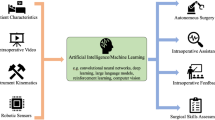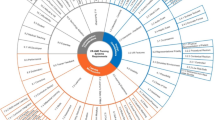Abstract
Background: This study was undertaken to establish construct validity of the Xitact LS500, a virtual reality laparoscopic cholecystectomy simulator. The primary research statement is: “The clip-and-cut task on the Xitact LS500 virtual reality laparoscopic cholecystectomy simulator mimics the surgical procedure of the clipping and cutting of the cystic duct and artery during the laparoscopic cholecystectomy adequately.” Methods: According to the level of experience of the surgeon, an “expert group opinion” was formed resulting from 37 surgeons having performed over 100 laparoscopic cholecystectomies, and a “novice group opinion” was formed resulting of 37 surgeons having no experience at all with performing laparoscopic cholecystectomy. Participants received an instructed hands-on “tour” on the Xitact simulator and performed three formal simulation runs. Results: The “novice group” is younger and more surgeons are female. Performance scores in the “expert” group are significantly higher on the second (p value 0.011) and third (p value 0.005) run, compared to the novices’ scores. Experts are significantly faster on completion of all three runs. There is an increase in score over runs in both groups, which is statistically significant in the “expert group.” Less than one-third of surgeons in either group are able to correctly predict their performance score as generated by Xitact. Both “experts” and “novices” feel it is useful to train with Xitact LS500 in the surgical curriculum. Conclusions: Three hypotheses, formulated to operationalize the primary research statement, could be answered affirmatively. Although further validation studies are needed, the Xitact LS500 simulator seems to be able to discriminate between expert and novice surgeons in this research setting, and thus the construct for this setting is considered to be valid.



Similar content being viewed by others
References
G Ault et al. (2001) ArticleTitleExporting a technical skills evaluation technology to other sites. Am J Surg 182 254–256 Occurrence Handle10.1016/S0002-9610(01)00700-0 Occurrence Handle1:STN:280:DC%2BD3MrktV2hug%3D%3D Occurrence Handle11587687
A Chaudhry et al. (1999) ArticleTitleLearning rate for laparoscopic surgical skills on MIST VR, a virtual reality simulator: quality of human–computer interface. Ann R Coll Surg Engl 81 281–286 Occurrence Handle1:STN:280:DC%2BD3c%2Fot1SlsQ%3D%3D
J Coleman CC Nduka A Darzi (1994) ArticleTitleVirtual reality and laparoscopic surgery. Br J Surg 81 1709–1711 Occurrence Handle1:STN:280:ByqC38fntlQ%3D Occurrence Handle7827924
AM Derossis M Antoniuk GM Fried (1999) ArticleTitleEvaluation of laparoscopic skills: a 2-year follow-up during residency training. Can J Surg 42 293–296 Occurrence Handle1:STN:280:DyaK1MzovVKhsA%3D%3D Occurrence Handle10459330
KB Gaberson (1997) ArticleTitleMeasurement reliability and validity. AORN J 66 1092–1094 Occurrence Handle1:STN:280:DyaK1c%2FnsFGhtw%3D%3D Occurrence Handle9413604
AG Gallagher et al. (1999) ArticleTitleVirtual reality training in laparoscopic surgery: a preliminary assessment of Minimally Invasive Surgical Trainer Virtual Reality (MIST VR). Endoscopy 31 310–313 Occurrence Handle10.1055/s-1999-15 Occurrence Handle1:STN:280:DyaK1Mzgt12msw%3D%3D Occurrence Handle10376458
Gallagher A, Crothers I, Satava R (2001) Comprehensive objective assessment of fundamental skills for laparoscopic surgery. In 19th International Congress of the European Association for Endoscopic Surgery, Maastricht, The Netherlands
Gallagher AG, et al. (2001) Objective psychomotor skills assessment of experienced, junior, and novice laparoscopists with virtual reality. World J Surg DOI: 10.1007/s00268-001-0133-1
Gallagher AG, et al. (2002) From VR to OR: a prospective, randomized, double-blind controlled trial of virtual reality (VR) training for operating room (OR) performance of laparoscopic cholecystectomy. In 10th International Congress of the European Association for Endoscopic Surgery, Centro de Congresses, Lisboa, Portugal
TP Grantcharov et al. (2001) ArticleTitleVirtual reality computer simulation: an objective method for the evaluation of laparoscopic surgical skills. Surg Endosc 15 242–244 Occurrence Handle10.1007/s004640090008 Occurrence Handle1:STN:280:DC%2BD38%2FgvFyjsw%3D%3D Occurrence Handle11344422
Grantcharov TP (2002) Teaching and testing surgical skills on a VR laparoscopy simulator—learning curves and effect of previous operative experience on performance. In 10th International Congress of the European Association for Endoscopic Surgery, Centro de Congresses, Lisboa, Portugal
Hyltander A et al. (2002) The transfer of basic skills learned in a laparoscopic simulator to the operating room. Surg Endosc DOI: 10.1007/s00464-001-9184-5
J-A Jordan et al. (2000) ArticleTitleA comparison between randomly alternating imaging, normal laparoscopic imaging, and virtual reality training in laparoscopic psychomotor skill acquisition. Am J Surg 180 208–211 Occurrence Handle1:STN:280:DC%2BD3M%2FmtFOiug%3D%3D Occurrence Handle11084131
D Karras (1997) ArticleTitleStatistical methodology: II. Reliability and validity assessment in study design, part B. Acad Emerg Med 4 144–147 Occurrence Handle1:STN:280:ByiC1MnktlY%3D Occurrence Handle9043544
SS McNatt SGT Smith (2001) ArticleTitleA computer-based laparoscopic skills assessment device differentiates experienced from novice surgeons. Surg Endosc 15 1085–1089 Occurrence Handle1:STN:280:DC%2BD3MnotV2jtw%3D%3D
AA Nelson (1980) ArticleTitleResearch design: measurement, reliability and validity. Am J Hosp Pharm 37 851–857 Occurrence Handle7395882
D Ota et al. (1995) ArticleTitleVirtual reality in surgical education. Comput Biol Med 25 127–137
AM Paisly P Baldwin S Paterson-Brown (2001) ArticleTitleFeasibility, reliability and validity of new assessment form for use with basic surgical trainees. Am J Surg 182 24–29 Occurrence Handle10.1016/S0002-9610(01)00647-X Occurrence Handle11532410
AM Paisly P Baldwin S Paterson-Brown (2001) ArticleTitleValidity of surgical simulation for the assessment of operative skill. Br J Surg 88 1525–1532 Occurrence Handle10.1046/j.0007-1323.2001.01880.x Occurrence Handle11683753
JB Prystowski et al. (1999) ArticleTitleA virtual reality module for intravenous catheter placement. Am J Surg 177 171–175 Occurrence Handle10.1016/S0002-9610(98)00328-6 Occurrence Handle10204565
RK Reznick (1993) ArticleTitleTeaching and testing technical skills. Am J Surg 165 358–361 Occurrence Handle1:STN:280:ByyC1M7ivFU%3D Occurrence Handle8447543
R Reznick et al. (1997) ArticleTitleTesting technical skills via an innovative “Bench Examination.” Am J Surg 173 226–230 Occurrence Handle10.1016/S0002-9610(97)89597-9 Occurrence Handle1:STN:280:ByiB2cnlsVM%3D Occurrence Handle9124632
RM Satava (2001) ArticleTitleAccomplishments and challenges of surgical simulation. Dawning of the next-generation surgical education. Surg Endosc 15 232–241 Occurrence Handle10.1007/s004640000369 Occurrence Handle1:STN:280:DC%2BD38%2FgvFyjsg%3D%3D Occurrence Handle11344421
Schijven MP, Jakimowicz J (2002) Face, expert, and referent validity of the Xitact LS500 Laparoscopy Simulator. Surg Endosc DOI: 10.1007/s00464-001-9229-9
Schijven MP, Jakimowicz J, Schot C (2002) The Advanced Dundee Endoscopic Psychomotor Tester (ADEPT) objectifying subjective psychomotor test performance. Surg Endosc DOI: 10.1007/s00464-001-9146-y
N Taffinder (1998) Validation of virtual reality to teach and assess psychomotor skills in laparoscopic surgery: results from randomized controlled studies using the MIST VR laparoscopic simulator. JD Westwood (Eds) et al. Technology and Informatics 50: Proceedings of Medicine Meets Virtual Reality, 28–31 January 1998 IOS Press and Ohmsha Amsterdam San Diego
NJ Taffinder et al. (1998) ArticleTitleAn objective assessment of surgeons’ psychomotor skills: validation of the MIST-VR laparoscopic simulator. Br J Surg 85 IssueIDSuppl 1 75 Occurrence Handle1:STN:280:DyaK1cvkvFalug%3D%3D Occurrence Handle9777838
J Torkington et al. (2001) ArticleTitleSkill transfer from virtual reality to a real laparoscopic task. Surg Endosc 15 1076–1079 Occurrence Handle1:STN:280:DC%2BD3MnotV2jsQ%3D%3D Occurrence Handle11727073
JD Whitney (1999) ArticleTitleNotes on methodology. Validity and reliability: basic research concepts. J WOCN 26 240–249 Occurrence Handle1:STN:280:DC%2BD3c3lsFOksg%3D%3D
MS Wilson et al. (1997) ArticleTitleMIST VR: a virtual reality trainer for laparoscopic surgery assesses performance. Ann R Coll Surg Engl 79 403–404 Occurrence Handle1:STN:280:DyaK1c%2FosVynsw%3D%3D Occurrence Handle9422863
Author information
Authors and Affiliations
Corresponding author
Rights and permissions
About this article
Cite this article
Schijven, M., Jakimowicz, J. Construct validity . Surg Endosc 17, 803–810 (2003). https://doi.org/10.1007/s00464-002-9151-9
Received:
Accepted:
Published:
Issue Date:
DOI: https://doi.org/10.1007/s00464-002-9151-9




